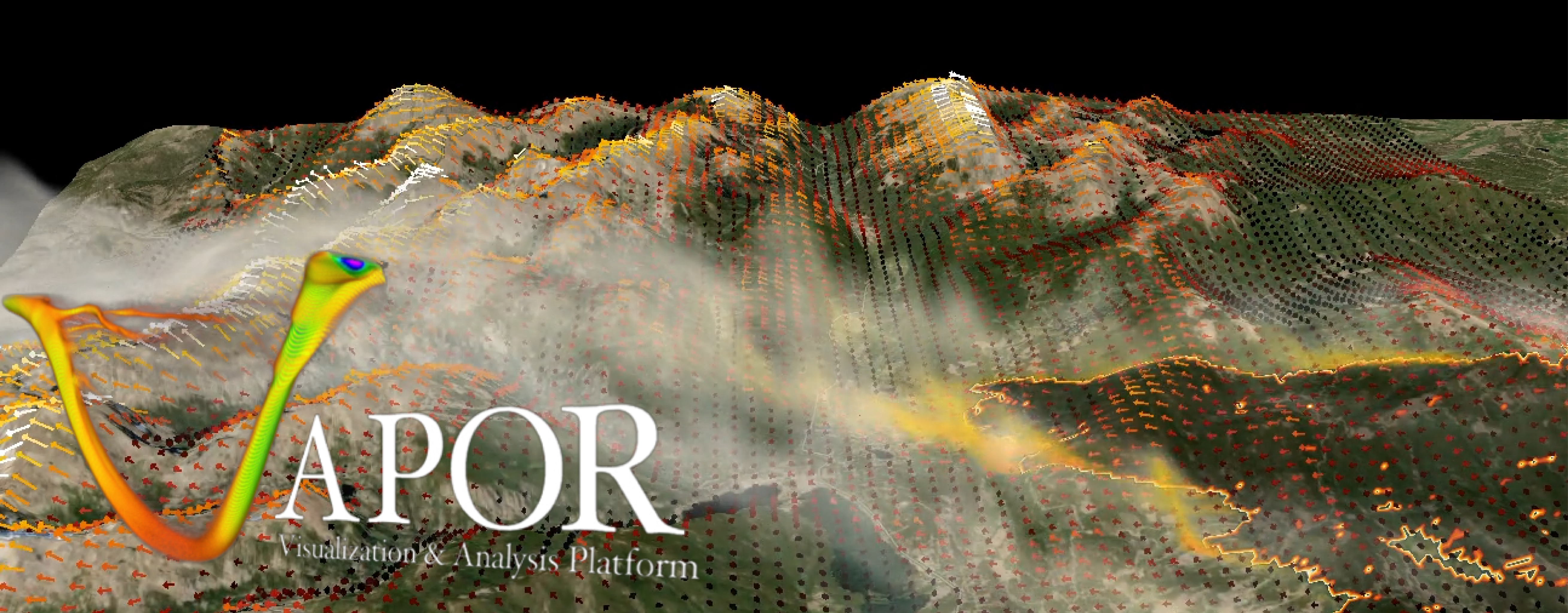
VAPOR Python Cookbook
This Project Pythia Cookbook provides an overview of the VAPOR Python API with example workflows.
Motivation
The Visualization and Analysis Platform for Ocean, Atmosphere, and Solar Researchers (VAPOR) provides an interactive 3D visualization environment for exploratory visual analysis and the production of captivating animations and high-quality images. VAPOR runs on most UNIX and Windows systems equipped with modern 3D graphics cards.
Structure
This cookbook is divided into three main sections. The “Quickstart” section is a good starting point for a general overview of VAPOR’s features and capabilities. The “Foundations” section gives more detailed examples for specific features in VAPOR. The “Example Workflows” section provides practical examples to see VAPOR in action and to gain an understanding of various workflows. Feel free to visit the sections that best fit your needs – it’s not necessary to follow them sequentially!
VAPOR Foundations
The foundation section gives a quick overview of the major components of VAPOR python. These include the funcationality to load/read data, set camera parameters, annotations, save animations and images, implementing renderes for data visualization.
Additionally, the links below can serve as a helpful reference.
Discussion forum for VAPOR.
Use this to delve deeper into the python classes
GUI version provides a graphical interface for VAPOR
Example Workflows
The example workflows section provides examples showing and end-end pipeline for analysis and visualization using VAPOR python.
Running the Notebooks
These notebooks cannot be run on Binder at the moment and need to be run on your machine.
Running on Your Machine
If you are interested in running this material locally on your computer, you will need to follow this workflow:
Clone the
https://github.com/ProjectPythia/vapor-python-cookbookrepository:git clone https://github.com/ProjectPythia/vapor-python-cookbook.git
Move into the
vapor-python-cookbookdirectorycd vapor-python-cookbook
Create and activate your conda environment from the
environment.ymlfileconda env create -f vapor_environment.yml conda activate vapor-cookbook-dev
Move into the
notebooksdirectory and start up Jupyterlabcd notebooks/ jupyter lab
At this point, you can interact with the notebooks! Make sure to check out the “Getting Started with Jupyter” content from the Pythia Foundations material if you are new to Jupyter or need a refresher.





